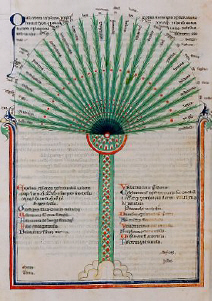24. With regard to locomotion: if ascending is to be held contrary to descending, and circular motion different (in kind) from motion in a straight line, we may ask how this difference is to be defined – the difference, for example, between throwing over the head and under the feet.
The driving power is one – though indeed it might be maintained that the upward drive is different from the downward, and the downward passage of a different character from the upward, especially if it be a natural motion, in which case the up-motion constitutes lightness, the down-motion heaviness.
But in all these motions alike there is the common tendency to seek an appointed place, and in this tendency we seem to have the differentia which separates locomotion from the other species.
As for motion in a circle and motion in a straight line, if the former is in practice indistinguishable from the latter, how can we regard them as different? The only difference lies in the shape of the course, unless the view be taken that circular motion is “impure,” as not being entirely a motion, not involving a complete surrender of identity.
However, it appears in general that locomotion is a definite unity, taking its differences from externals.
